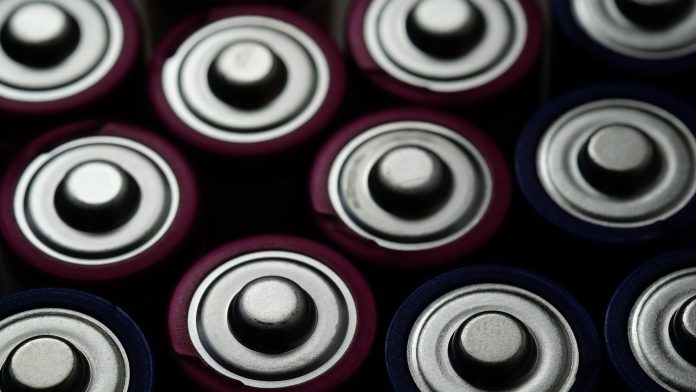Researchers have discovered a material property – a valence gradient – that can stabilise cathode materials for next-generation electric vehicle batteries.
A research group led by scientists at the US Department of Energy’s (DOE) Brookhaven National Laboratory has examined an elusive property in cathode materials, known as a valence gradient, to comprehend its impact on battery performance.
The team’s outcomes, published in Nature Communications, determined that the valence gradient can act as a novel method for stabilising the structure of high-nickel-content cathodes against degradation and safety concerns.
High-nickel-content cathodes have a uniquely high capacity, a chemical property that could power electric vehicles for much lengthier distances than existing batteries can support. However, the high nickel content also results in these cathode materials degrading at faster rates, forming cracks and stability concerns as the battery cycles.
In order to find a resolution to these structural challenges, researchers have synthesised materials made with a nickel concentration gradient, whereby the concentration of nickel slowly shifts from the surface of the material to its centre.
These materials display considerably improved stability, but researchers have not been able to ascertain whether the concentration gradient alone was accountable for the enhancements. The concentration gradient has conventionally been inseparable from another effect known as the valence gradient, or a slow shift in nickel’s oxidation state from the surface of the material to the bulk.
This novel research, led by Brookhaven Lab chemists at DOE’s Argonne National Laboratory, synthesised a distinctive material that isolated the valence gradient from the concentration gradient.
“We used a very unique material that included a nickel valence gradient without a nickel concentration gradient,” explained Brookhaven chemist Ruoqian Lin, first author of the study. “The concentration of all three transition metals in the cathode material was the same from the surface to the bulk, but the oxidation state of nickel changed. We obtained these properties by controlling the material’s atmosphere and calcination time during synthesis. With sufficient calcination time, the stronger bond strength between manganese and oxygen promotes the movement of oxygen into the material’s core while maintaining a Ni2+ oxidation state for nickel at the surface, forming the valence gradient.”
After the team effectively synthesised a material with an isolated valence gradient, they examined its performance by applying two DOE Office of Science user facilities at Brookhaven Lab – the National Synchrotron Light Source II (NSLS-II) and the Center for Functional Nanomaterials (CFN).
At NSLS-II, an ultrabright x-ray light source, the researchers leveraged two cutting-edge experimental stations, the Hard X-ray Nanoprobe (HXN) beamline and the Full Field X-ray Imaging (FXI) beamline. By merging the abilities of both beamlines, they could visualise the atomic-scale structure and chemical makeup of their sample in 3D after the battery functioned over multiple cycles.
“Both beamlines have world-leading capabilities. You can’t do this research anywhere else,” commented Yong Chu, leader of the imaging and microscopy program at NSLS-II and lead beamline scientist at HXN. “FXI is the fastest nanoscale beamline in the world; it’s about ten times faster than any other competitor. HXN is much slower, but it’s much more sensitive – it’s the highest resolution x-ray imaging beamline in the world.”
HXN beamline scientist Xiaojing Huang said, “At HXN, we routinely run measurements in multimodality mode, which means we collect multiple signals simultaneously. In this study, we used a fluorescence signal and a phytography signal to reconstruct a 3-D model of the sample at the nanoscale. The florescence channel provided the elemental distribution, confirming the sample’s composition and uniformity. The phytography channel provided high-resolution structural information, revealing any microcracks in the sample.”
Meanwhile at FXI, “the beamline showed how the valence gradient existed in this material. And because we conducted full-frame imaging at a very high data acquisition rate, we were able to study many regions and increase the statistical reliability of the study,” Lin added.
At the CFN Electron Microscopy Facility, the team utilised a sophisticated transmission electron microscope (TEM) to visualise the sample with ultrahigh resolution. Contrasted to the x-ray studies, the TEM can only investigate a reduced area of the sample and is thus less statistically reliable across the whole sample, but the data are far more detailed and visually intuitive.
Through a combination of the data accumulated at the different facilities, the team was able to verify that the valence gradient played a vital role in battery performance. The valence gradient ‘hid’ the more capacitive but less stable nickel regions in the centre of the material, revealing only the more structurally sound nickel at the surface. This essential arrangement suppressed the formation of cracks.
The team conclude that this research underlines the positive effect concentration gradient materials can have on battery performance while providing a novel, complementary approach to stabilise high-nickel-content cathode materials through the valence gradient.
“These findings give us very important guidance for future novel material synthesis and design of cathode materials, which we will apply in our studies going forward,” Lin concluded.









